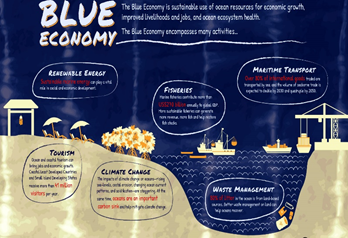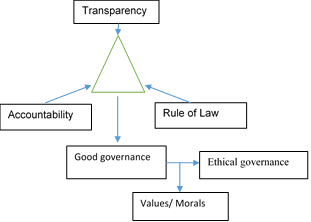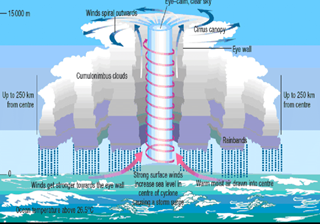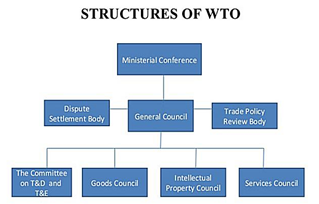Nov. 29, 2019
Mains Daily Question
Nov. 29, 2019
Q. Oceans are the major sources for multiple living and non-living resources that are useful for the growth of blue economy. In this light discuss the concept of Blue economy and its importance for India.
Structure of the answer:
- Introduction (Blue economy)
- Ocean as the source for various resources
- Importance of blue economy
- Final analysis
The concept of blue economy was given by Gunter Pauli. It is the sustainable use of ocean resources for economic growth, improved livelihoods and jobs and ocean ecosystem health. Thus, it advocates the greening of ocean development for purposes of higher productivity and at same time conserving ocean's health.
The oceans are the sources for various resources such as follows:
- Oceans contain several varieties of fishes and sea weeds that have tremendous potential to be used for industrial and human activities.
- Minerals derived from the oceans include Petroleum gas, shale gas, Magnesium, Sulphur, Poly-metallic nodules that are useful for industrial usage.
- Maritime Transport constitute over 80% of international trade and commerce.
- Ocean and coastal tourism are important source for job creation and economic growth.
- Tides in ocean release a lot of renewable energy that can be used to operate a turbine and produce electricity. For ex.-
- Further, oceans are an important carbon sink (blue carbon) and that can help mitigate climate change.
In light of above, the importance of blue economy for India is as follows:
- Blue economy presents India with an opportunity to meet its national socio-economic objectives as well as strengthen connectivity with neighbors.
- Blue Economy can help in livelihood generation, achieving energy security, building ecological resilience and improving living standards of coastal communities.
- Blue economy can reinforce and strengthen efforts of Indian government to achieve the SDGs of hunger and poverty eradication by 2030.
- Further, marine services sector could serve as the backbone of Indian economy and help it become 10 trillion-dollar economy by 2022.
- Moreover, international practice of the countries such as Australia, China, Mauritius is also suggestive of the fact that of use of ocean/ blue economy for meeting their development objectives.
Thus, India and world as a whole should look to adopt the Gandhian approach of balancing economic benefits derived from blue economy for meeting the broader goals of growth, employment generation, equity and protection of environment.
Nov. 27, 2019
Mains Daily Question
Nov. 27, 2019
Q. The amendment procedure under Indian Constitution is a curious mixture of rigidity and flexibility. In this light discuss the different procedure for amendment reflecting such blend.
Structure of the answer:
- Introduction (Article 368)
- Different types of amendment process
- Reflection of rigidity and flexibility
- Way forward
The nature of the amending process envisaged by the makers of our Constitution has been explained by Pandit Jawaharlal Nehru as reconciliation of a written Constitution with Parliamentary Sovereignty. Article 368 (Part XX) of the Constitution deals with the power of Parliament to amend the constitution and its procedures.
The Constitution provides a mix of flexible and rigid provision for amendment as noted bellow:
- Amendment of certain provisions of the constitution requires amendment by a simple majority of each house present and voting. Such changes are not deemed to be amendments for purposes of Article 368. For ex.- formation of new states, citizenship provisions, changes in 5th or 6th Schedule
- Whereas, special majority is required under Article 368(2). Here, Parliament can amend by 2/3 of the member’s present plus voting and majority of the numerical strength of the house. For ex- amending fundamental Rights.
- Certain features relating to the federation requires ratification by half of the states besides requiring special majority. For ex.- election of President; representation of states in Parliament
Thus, as discussed above the amending process prescribed by the Constitution has certain distinctive features as compared to other Constitutions of the world i.e. having a dual attribute of rigidity and flexibility.
However, some critics have described the amendment procedure to be too flexible in view of the ease with which more than 100 amendments have been passed in last 60 years of the working of the Constitution. Therefore, the use of the amendment procedure should be as a measure of last resort. Moreover, while passing the amendment the Parliament must preserve the basic framework (basic structure) of the Constitution.
Nov. 25, 2019
Mains Daily Question
Nov. 25, 2019
Q. The British rule has been often been described as the reason for drain of Indian wealth to Britain. In this light discuss constituent of economic drain and consequences of the same.
Structure of the answer:
- Introduction (drain of wealth)
- Estimate of drain of wealth
- Constituent of economic drain
- Consequences
- Final analysis
The constant flow of wealth from India to England for which India did not get an adequate economic, commercial or material return has been described as drain of wealth from India. Dadabhai Naoroji gave ‘drain of wealth theory’ in his book ‘Poverty and Un-British Rule in India’. Scholarly, estimate drain of wealth to be around 9% of India’s GDP in 18th century and 6% of GDP in 19th century.
The various constituents of drain of wealth are as follows:
- Territorial Expansion enabled the Company to generate greater commercial revenues to access Indian goods for export purposes.
- The drain also included the movement of private funds to England. For ex.- earnings of Englishmen from plunders during wars, bribes obtained from the native states According to G.A. Princep, over Rs. 1 crore was sent away from India every year between 1813 and 1820 as private wealth.
- Another form of movement of wealth away from India was the money paid to banks, insurance companies, shipping companies in England for the services they render in India.
- The Company's remittances to England (Home Charges) also formed a major part of the drain. This included, salaries/ pensions paid to the Company's employees in England
The consequence of Drain of wealth were as follows:
- It impoverished all the section of Indian society particularly the peasants, who bore the brunt of the taxes raised by the Britishers.
- It drained India of its precious capital, which could have otherwise been invested in industrialization/ modernization of India.
- The drain of Indian wealth was used for financing the Industrial Revolution in England and is also the reason why industrial revolution did not take place in India.
- The economic criticism of British rule had helped in shattering the myth of benevolence of British administration in India.
- It was instrumental in laying the foundations for the demand for Swaraj and ensuing freedom struggle.
Thus, British methods of exploitation though less painful but resembled the blood-sucking leeches.
Nov. 22, 2019
Mains Daily Question
Nov. 22, 2019
Q. The term ‘governance’, ‘good governance’ and ‘ethical governance’ though looks similar, yet signifies different idea. In this background, differentiate the above-mentioned terms in light of governance structure in India.
Structure of the answer:
- Introduction
- Meaning of different terms with help of example
- Final analysis/ conclusion
The term ‘governance’, ‘good governance’ and ‘ethical governance’ appears to be used interchangeably and are intrinsically interlinked. Yet, each of them signify different meaning in their own sense. The same are discussed below with help of examples.
The term ‘governance’ is defined as follows:
- It is the exercise of economic, political and administrative authority to manage a country’s affairs.
- It is also the process through which various stakeholders articulate their interest, exercises their rights and mediate their differences.
- Many times it is defined as interface between the government and those governed. For ex.- delivery of public services like food, education, health.
In this context, 2nd ARC suggested various measures to improve governance, therefore the word ‘good governance’ implies:
- Responsive, accountable, sustainable and efficient administration at all levels.
- Further, transparency, accountability, rule of law, principle of subsidiarity and citizen first form basics of good governance. For ex.- delivery of services like PDS shall be quick, devoid of middlemen, reach even the most marginalised at minimum cost.
Whereas, the concept of ‘ethical governance’ is value laden, it means:
- Administrative procedures and policies shall fulfil criteria of ethical handling of public affairs.
- Utilitarian approach (Bentham’s approach) is followed to serve maximum good and difference between ethical-legal is handled appropriately.
Hence, governance shall be good as well as ethical.
Nov. 20, 2019
Mains Daily Question
Nov. 20, 2019
Q. The town planning in Harappan Civilization shows the high level of sophistication. In this light discuss the significant features of Harappan town planning. Also mention the various theories in relation to decline of the Civilization.
Structure of the answer:
- Introduction
- Significant features
- High level of sophistication
- Decline of Harappan civilization
The Indus Valley Civilization (IVC), also known as Harappan Civilization flourished around 2,500 BC in the western part of South Asia. The Harappan culture was distinguished by its system of town planning.
Significant features of the Harappan town planning are as follows:
- Division of city into the Citadel e. mound built on the high podium and the lower town containing brick houses inhabited by the common people.
- The arrangement of the houses in the cities followed a grid system.
- Advanced drainage and sanitation system of each house were connected with road drains that were covered by stone slabs.
- The other significant features were well-arranged water supply system, street lightning system, designated places to throw waste material
The significant features also show high level of sophistication in town planning as:
- The use of burnt bricks in the Harappan cities was remarkable as buildings of Egypt mainly used dried bricks.
- Harappans laid special emphasis on health and hyenine as seen from bathroom in every house and well laid drainage system.
- The town planning also kept into mind the need for storehouses for having provision during emergency. For Ex.- Great granaries of Harappa.
However, the Harappan civilization began to decline around 1800-1500 BC and some of the reason/ theories proposed by historians are as follows:
- The massive floods in the Indus may have been a potent cause for the extinction of the Harappan culture.
- Repeated seismographic vibrations must have also led to erosion of decline of Harappan civilization as it lied in high seismic region.
- Further, water scarcity must have led to the exodus of the Harappan people to other places.
- Outbreak of the plague epidemic is also shown as a reason for the decline of Harappan civilization.
- Prof D.D. Kosambi is of the opinion that the Aryan invasion is the reason for the decline of Harappan culture.
Thus, the multiple causes/ factors have been proposed to be responsible for the decline of Harappan culture.
Nov. 18, 2019
Mains Daily Question
Nov. 18, 2019
Q. Discuss the various features of tropical cyclones. While mentioning the factors contributing in formation of tropical cyclone differentiate them from extra-tropical cyclones.
Structure of the answer:
- Introduction
- Features of tropical cyclone
- Factors contributing in formation of cyclones
- Difference between tropical and extra tropical cyclones
- Conclusion
Cyclone is an intense vortex or a whirl in the atmosphere with very strong winds circulating around it in anti-clockwise direction in the Northern Hemisphere and in clockwise direction in the Southern Hemisphere. For Ex- Cyclone Titli
Some of the special characteristics of tropical cyclones are as follows:
- Cyclones have intense low pressure areas and pressure increases outwards.
- They mainly originate mainly in zones between 5– 30 °C Norther & South of latitude.
- These originate over oceans in tropical areas & move to coastal areas.
- They have large destructive force caused by violent winds, heavy rainfall & storm surges.
- Tropical cyclones follow a parabolic path and its axis is parallel to the isobars.
Some of the necessary condition for the formation of tropical cyclones are as follows:
- Continuous supply of abundant warm and moist air.
- Sea temperature in lower latitudes should be around 27°C.
- The cyclones require presence of large Coriolis force to deflect winds blowing toward the low pressure centre.
- There must also be pre-existence of weak tropical disturbances.
- Further, there should be presence of anticyclonic circulation at the height of 9 to 15 km above the surface.
However, the tropical cyclones are different from temperate cyclones in following ways:
- Tropical cyclone is confined between 5-30° N-S of the equator, whereas temperate cyclone originate between 30 to 60° N-S of the equator.
- Coriolis force plays vital role in the origin of tropical cyclone, whereas for temperate cyclone frontogenesis is the driving force.
- Temperate cyclone covers large area as compared to tropical cyclone.
- Tropical cyclone generally originates over water surface but the temperate cyclone originates over mid-latitude land mass.
- Temperate cyclone generally moves eastward, while tropical cyclone moves from east to west.
- Cyclone’s eye is a typical feature in case of tropical cyclone, while temperate cyclone have no such concept.
Thus, as cyclones carries destructive force there is a need for timely dissemination of warning and increasing preparedness of disaster management authorities.
Nov. 15, 2019
Mains Daily Question
Nov. 15, 2019
Q. World trade organisation (WTO) as a multilateral body is facing challenges on various counts. In this light discuss the relevance of WTO and also suggest suitable reform in its functioning.
Structure of the answer:
- Introduction (about WTO)
- Challenges faced by WTO
- Relevance of WTO
- Reform in functioning of WTO
WTO was set up under Marrakesh Treaty (1994) and as an organization aim to improve living standards, generate employment, and expand global trade.
However, in recent years WTO is facing challenges on various counts such as:
- Consensus based rule making has become a root cause in stagnation in reforms.
- Further, the very existence of WTO is under threat with rise of trade disputes/ trade war between China and USA.
- WTO has also failed to change as per the global requirement. For Ex.- WTO lacks any agreement to deal with e-commerce.
- WTO is facing process challenges/ loopholes such as the negotiation process prime facie seems democratic but Ministerial Conferences are opaque and overly technical.
- The dispute resolution mechanism is costly and lengthy. It is majorly resorted to by developed countries and developing countries are victims to the mechanism.
But, the WTO remains relevant considering the following points in its favour:
- It amicably settles disputes among its members through its Dispute Settlement Mechanism.
- World trade body serves as a platform on new global trade agreements. Like- Doha Round.
- It ensures that global trade follows rules-based multilateral trading system.
- WTO by removing trade barriers stimulates global growth.
- WTO ensure predictability and transparency in trade-related regulations through its binding provisions.
- It also preserves member’s autonomy as members are free to enter into preferential trade agreements and free trade agreements.
In light of the above challenges following reforms are required in functioning of WTO:
- Plurilateral negotiations should be promoted as they offer prospect of building coalition among like-minded members.
- The appointment process to dispute settlement body should be made independent of political control.
- The issue of abuse of national-security exemption to justify trade restrictions should be solved at the political level, rather than at WTO.
- WTO should be conferred with penalizing powers to curb wilful non-compliance.
There is also a need for using other platforms for reform talks such as G20, which have the advantage of limited and effective global membership.
Nov. 13, 2019
Mains Daily Question
Nov. 13, 2019
Q. Regionalism in India is a result of various interconnected factors. In this light discuss the various types regionalism in India and also suggest suitable measures to curtail negative impact pf regionalism.
Structure of the answer:
- Introduction (regionalism)
- Factors responsible for regionalism
- Types of regionalism
- Conclusion/ way forward
Regionalism is a strong attachment to one’s own region. Thus, it is an ideology that seek to advance cause of a region. The rise of regionalism in India is a result of various factors:
- Historically, formation of various regional kingdoms and frequent regional wars led to rise of regional ideology.
- Due to specific geography of a region there developed different food, clothing
- The mother tongue (linguism) also created a profound attachment to one’s own language and hence regional identity developed.
- Formation of regional parties to protect regional interest also led to rise of regionalism. For Ex- Shiv Sena.
- Lop sided economic development led to inequality between different state and consequently leading to regionalism. For ex- problem of Naxalism.
In this background, the different types of regionalism are categorised as follows:
- Parochialism: When people of a region consider regional interest superior and shun nationalist outlook. For ex- Violence by ULFA (Assam) against Bihari.
- Regionalism: Reflected when people of a region raise voice for their autonomy, rights, fair share in development process and demand separate statehood or autonomy within state. For ex- Bodoland demand.
- Secessionism: When a region tries to end its association from the nation to see itself as separate entity on the world map. For ex- Z. Phizo demand for Nagaland.
- Inter-state rivalry: State and its people see other states as its competitors resulting into conflict over sharing of common resources, land boundary issues For ex- Cauvery water dispute between Tamil Nadu-Kerala.
Way forward:
- The role of National Integration Council must be revamped to resolve conflicting regional aspirations.
- Reviving national games such as Hockey, which can become symbol of unity.
- Cultural sensitisation must be taken up in colleges to avoid hatred based on regions. For ex- setting up food stalls from other states.
- The focus must also be on development of underdeveloped, backward and naxal hit regions.
Such steps will help achieving the aim of Ek Bharat Shrestha Bharat.
Nov. 11, 2019
Mains Daily Question
Nov. 11, 2019
Q. Hate speech in India is a result of various facilitating factors. In this light discuss the impact of hate speech and suggestion to effectively deal with the same.
Structure of the answer:
- Introduction (Meaning)
- Factors supporting hate speeches
- Impact of hate speech
- Way for ward/ suggestion
Hate speech is incitement of hatred primarily against a group of people defined in terms of race, ethnicity, sexual orientation etc. The issue of hate speech has become a recurrent phenomenon especially before the elections.
There are various factors facilitating hate speeches that are as follows:
- Social media platforms are susceptible to misuse due to their reach and anonymity. Thus, it is very difficult to trace who is posting such content.
- Media’s deliberate and unintentional negative portrayals of speeches impact people’s view.
- There is lack of legal clarity as to what constitute hate speech and what does not. This has led to the culprit not being prosecuted.
- Moreover, there is also legal loopholes as hate speech has been indirectly under 6-7 provisions of Indian Penal Code.
Impact of such a hate speech has been seen in following terms:
- Propagation of hate speech by the terror outfit leads to radicalisation of youth and poses a threat to internal security of a nation.
- Hate speech leads to hate crimes as seen during exodus of North Eastern students from Bangalore (2013).
- The hate speech has also led to rise of refugee crisis not only within Indian but also around the world. For ex.- Rohingya crisis in Myanmar.
- Hate speech causes fear and lead people to withdraw from public debate and thus impact freedom of speech and expression.
Thus, to effectively deal with issue of hate speech, there is a need to adopt multiprong approach:
- As recommended by Law Commission of India and TK Vishwanath Committee there is a need for insertion of new Section in IPC in from of Section 153C to effectively deal with hate speech.
- There is also a need for training among police officers and legal bodies for encouraging reporting of such content.
- There is a need for awareness generation and contra-narrative on social media network.
There is also a need for involvement of religious heads to build empathy across religious lines.
Nov. 8, 2019
Mains Daily Question
Nov. 8, 2019
Q. India’s quest to land its first spacecraft on the moon got off to a smooth start with the successful launch of Chandrayaan-2 mission aboard the country’s most powerful rocket - GSLV Mk-III. In light of this statement, discuss the significance of this mission.
Chandrayaan-2 is India’s most challenging, totally indigenous, and India’s second mission to Moon. It is advanced version of previous Chandrayaan-1 mission (launched in 2008) which only involved orbiting around moon, Chandrayaan-2 is much complicated mission as it involves an orbiter, lander and rover. After reaching the 100 km lunar orbit, the Lander housing the Rover was to separate from the Orbiter. After a controlled descent, the Lander was supposed to soft land on the lunar surface at a specified site and deploy a Rover.
Significance of the Mission
- Technical: The mission will help India and the world gain a better understanding of the origin and evolution of the Moon by conducting detailed topographical studies, comprehensive mineralogical analyses, and a host of other experiments on the lunar surface.
- Understanding of the Solar System: Unlike the earth, the moon does not have a tilt around its axis. It is almost erect, because of which some areas in the polar region never receive sunlight. Anything here remains frozen, almost for eternity. Scientists believe that rocks found in these craters could have fossil records that can reveal information about the early solar system.
- Quest for Water: Two instruments on board Chandrayaan-1 provided irrefutable evidence of water on the Moon, something that had been elusive for more than four decades. Chandrayaan-2 will take the search further, trying to assess the abundance and distribution of water on the surface.
- Colonisation: It is very difficult for humans to survive on Moon’s surface due to hazardous radiation, micro-meteoritic impacts, extreme temperature and dust storms. It will try to find possibilities of sustaining human life on Earth’s natural satellite with an aim to colonising it.
- Geopolitical
- Indigenous development: The mighty launch vehicle GSLV Mk -III has been completely designed and made within the country, making it a fully home-grown technology, hence Chandrayaan 2 is a fully indigenous mission.
- Frugal Engineering: Chandrayaan 2 also stands out for its frugal cost of engineering as its total cost is way lower than several other lunar missions. ISRO has carved a niche for itself across the globe, in the sphere of astronomy and space research for running cost-effective as well as less expensive projects.
- Indigenous development: The mighty launch vehicle GSLV Mk -III has been completely designed and made within the country, making it a fully home-grown technology, hence Chandrayaan 2 is a fully indigenous mission.
- Led by India’s ‘Rocket Women’: Apart from having many first-time milestones, the Chandrayaan 2 project is being spearheaded by two senior women scientists of ISRO. The mission will inspire a future generation of scientists, engineers and explorers including women who will not only endeavour to break the doors of patriarchy but rise high above in the space.
Conclusion
The soft-landing on the lunar surface of the moon was the most complex part of Chandrayaan 2 mission. Only US, Russia and China have been able to soft land spacecraft on lunar surface. Unfortunately, in the last leg of soft landing, India lost its communication with Vikram Lander. But yet the milestone was a 95% success, as told by the ISRO chief.





